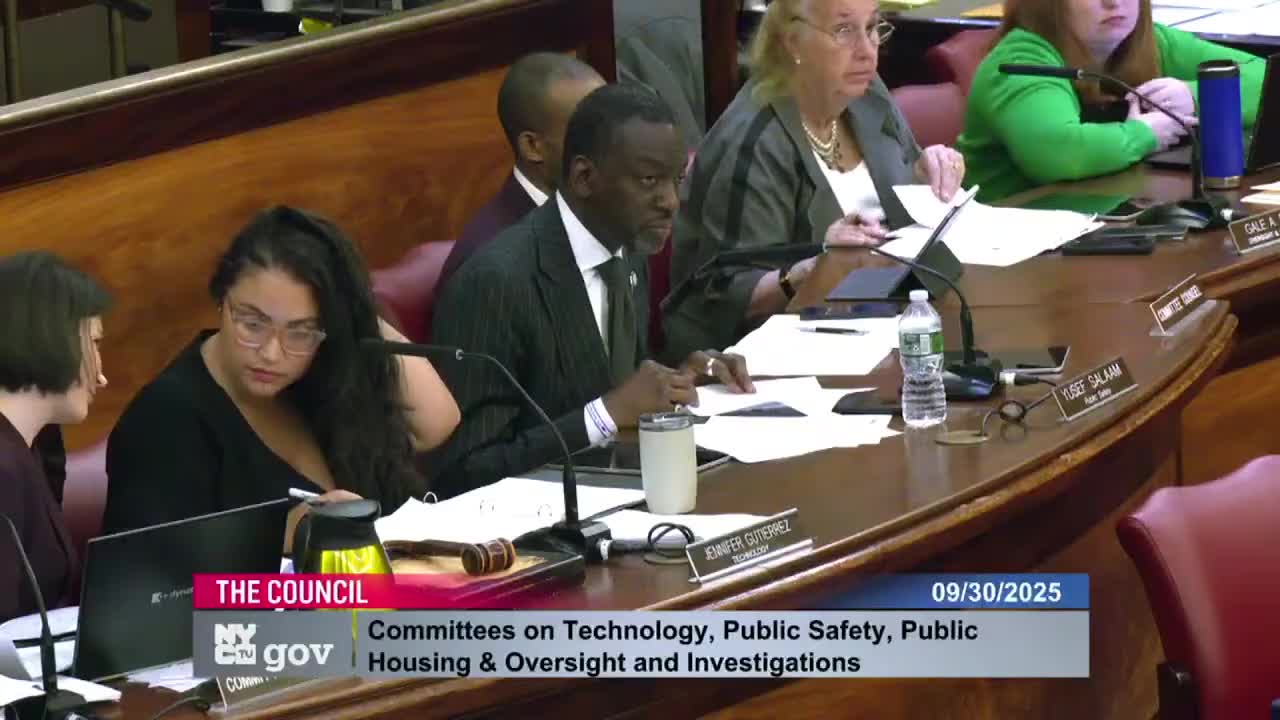NYCHA and NYPD Expand Camera Integration for Enhanced Public Safety by 2025
September 30, 2025 | New York City Council, New York City, New York County, New York
This article was created by AI summarizing key points discussed. AI makes mistakes, so for full details and context, please refer to the video of the full meeting. Please report any errors so we can fix them. Report an error »

The recent government meeting focused on the use of surveillance cameras in New York City Housing Authority (NYCHA) developments, highlighting key discussions about the integration of these cameras with the NYPD's Domain Awareness System (DAS). The meeting, held on September 30, 2025, addressed concerns regarding the types of cameras used, their capabilities, and the implications for resident privacy.
A significant point raised was the number of cameras currently in use within NYCHA developments, which totals nearly 20,000. Officials confirmed that these cameras do not capture audio and are primarily used for live feeds, with video retention periods ranging from 14 to 21 days before being overwritten. The integration of NYCHA's camera feeds into the NYPD's surveillance system has been ongoing since 2015, with plans to expand the number of connected sites to 119, encompassing approximately 17,897 cameras.
Concerns were voiced regarding the lack of transparency about the specific models and manufacturers of the cameras, as well as the decision-making process behind which developments were prioritized for camera integration. Officials stated they would provide further details on the camera specifications and the rationale for site selection.
The meeting also addressed the issue of privacy, with assurances that the NYPD does not utilize real-time facial recognition technology or biometric tracking through these cameras. Access to the footage is strictly controlled, and while the NYPD can view the feeds, it is not done continuously but rather on an as-needed basis.
Additionally, the discussion touched on the responsibilities of NYCHA to inform residents about significant changes affecting their lives, including surveillance measures. Officials acknowledged that residents frequently request improved security measures, including more cameras, but the question of whether residents consented to the integration of these cameras with the NYPD's system remains unanswered.
As the city moves forward with its surveillance initiatives, the implications for public safety and resident privacy continue to be a focal point of discussion among city officials and community members. The next steps include providing further information on camera specifications and addressing resident concerns regarding surveillance practices.
A significant point raised was the number of cameras currently in use within NYCHA developments, which totals nearly 20,000. Officials confirmed that these cameras do not capture audio and are primarily used for live feeds, with video retention periods ranging from 14 to 21 days before being overwritten. The integration of NYCHA's camera feeds into the NYPD's surveillance system has been ongoing since 2015, with plans to expand the number of connected sites to 119, encompassing approximately 17,897 cameras.
Concerns were voiced regarding the lack of transparency about the specific models and manufacturers of the cameras, as well as the decision-making process behind which developments were prioritized for camera integration. Officials stated they would provide further details on the camera specifications and the rationale for site selection.
The meeting also addressed the issue of privacy, with assurances that the NYPD does not utilize real-time facial recognition technology or biometric tracking through these cameras. Access to the footage is strictly controlled, and while the NYPD can view the feeds, it is not done continuously but rather on an as-needed basis.
Additionally, the discussion touched on the responsibilities of NYCHA to inform residents about significant changes affecting their lives, including surveillance measures. Officials acknowledged that residents frequently request improved security measures, including more cameras, but the question of whether residents consented to the integration of these cameras with the NYPD's system remains unanswered.
As the city moves forward with its surveillance initiatives, the implications for public safety and resident privacy continue to be a focal point of discussion among city officials and community members. The next steps include providing further information on camera specifications and addressing resident concerns regarding surveillance practices.
View full meeting
This article is based on a recent meeting—watch the full video and explore the complete transcript for deeper insights into the discussion.
View full meeting
